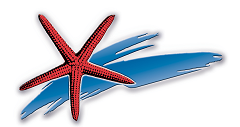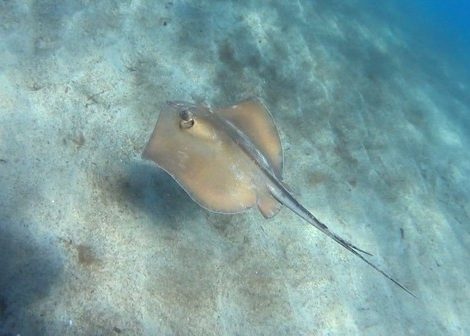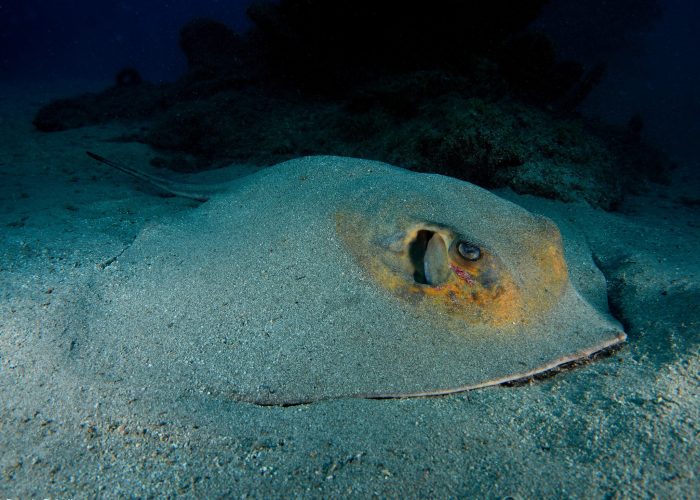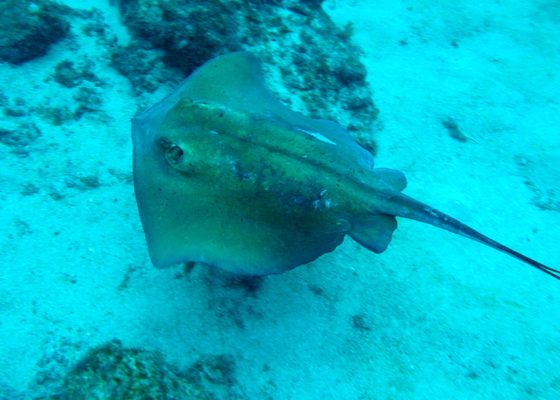Dasyatis tortonesei
Common name: Tortonese’s stingray
Order: Myliobatiformes
Family: Dasyatidae
Synonymes: Previously considered as a synonym of Dasyatis pastinaca.
Misidentifications: Dasyatis pastinaca and Dasyatis marmorata
Short description
Medium sized species with a bulgy head and a short snout. Rhomboidal disc, more or less sinuous margins, with a short membranous fold on the lower part. Teeth rough and small. The median previous extremity of the fontanel is inwardly curved. The anterior extremity of the basibranchial is not perforate. Dart in the base of the tail.
Color: Dorsal view is uniformly brownish to yellowish, varying to orange.
Measurements:
- Disk width (DW): up to 65 cm (max 84 cm)
Swimming pattern: Undulatory locomotion.
Biology / Ecology
Feeds on benthic crustaceans, molluscs and fishes.
Reproduction: Viviparous (aplacental viviparity). Size maturity (DW): 35-38 cm males, 46-47 cm females. Juveniles per litter: 3-9. Size at birth (DW): 15-16 cm.
Habitat: Coastal benthic species in temperate water from shallow water to 200 m of depth. May enters lagoons like D. pastinaca.
Unlike D. pastinaca, D. tortonesei has rough and small tooth crowns.
Distinguishing characteristics
- Obtuse and short snout.
- Brownish to yellowish, varying to orange, dorsal surface.
- Dart in the base of the tail.
- Tooth crowns rough and small.
Myliobatiformes: No caudal and anal fin. Thin tail like a whip.
Dasyatidae: Batoids with depressed bodies.
Distribution
Worldwide: Eastern Atlantic from Morocco to Mauritania.
Mediterranean: Unclear distribution due to misidentification with D. pastinaca.
- Occurrence: Rare.
- Latest records: Malta (2017), Tunisia (2016), Mersin bay – Turkey (2013), Antalya Gulf – Turkey (2010), Izmir Bay and Sığacık Bay – Turkey (2007-2009), Syria (2001), Israel (1996).
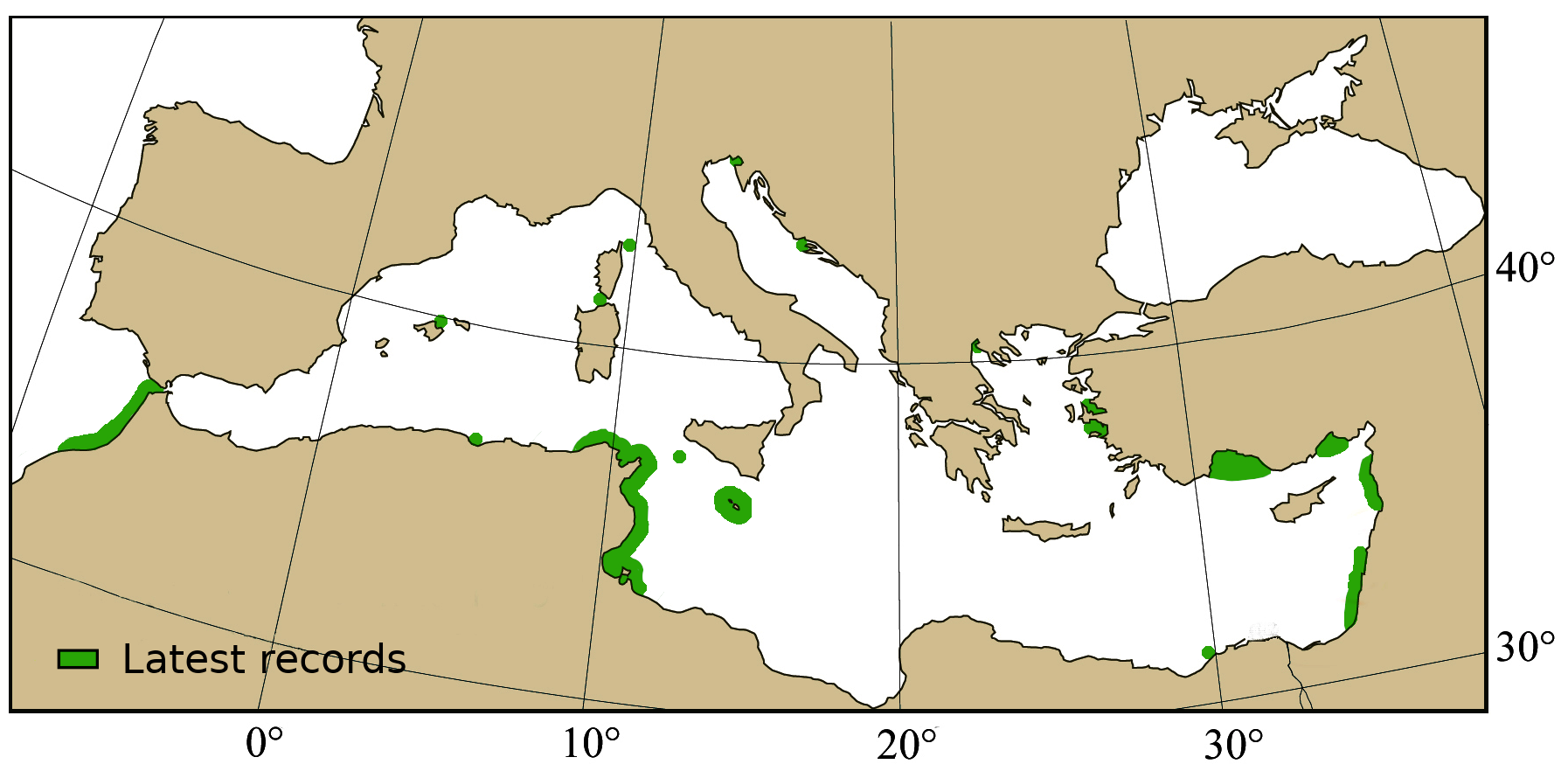
Any recent observation not on the map?
Contact us!
Conservation
Threats: Caught in trammel nets.
Protection level:
- Global: Data Deficient (IUCN 2021, last assessment: 2020)
Key references
- Ali M.F. 2018. An updated Checklist of the Marine fishes from Syria with emphasis on alien species. Mediterranean Marine Science 19(2): 388-393.
- Ali M., Saad Adib. 2003. Sharks and Rays in the Syrian marine waters. Basel al-Assad Journal For Engineering Sciences: 45-76 [arabic] .
- Carpentieri P., Nastasi A., Sessa M., Srour A. 2021. Incidental catch of vulnerable species in Mediterranean and Black Sea fisheries – A review. General Fisheries Commission for the Mediterranean – Studies and Reviews 101: I-317.
- Eronat E.G.T., Özaydın O. 2014. Length-weight relationship of cartilaginous fish species from Central Aegean Sea (Izmir Bay and Sığacık Bay). Su Ürünleri Dergisi 31(3): 119-125.
- Golani D. 2005. Checklist of the Mediterranean fishes of Israel. Zootaxa 947(1): 1-90.
- Saadaoui A., Saidi B., Elglid A., Seret B., Bradai M. 2016. Taxonomic observations on stingrays of the genus Dasyatis (Chondrichthyes: Dasyatidae) in the Gulf of Gabès (southeastern Mediterranean Sea). Zootaxa 4173(2): 101-113.
- Vella N., Vella A. 2021. Characterization and comparison of the complete mitochondrial genomes of two stingrays, Dasyatis pastinaca and Dasyatis tortonesei (Myliobatiformes: Dasyatidae) from the Mediterranean Sea. Molecular Biology Reports 48(1): 219-226.
